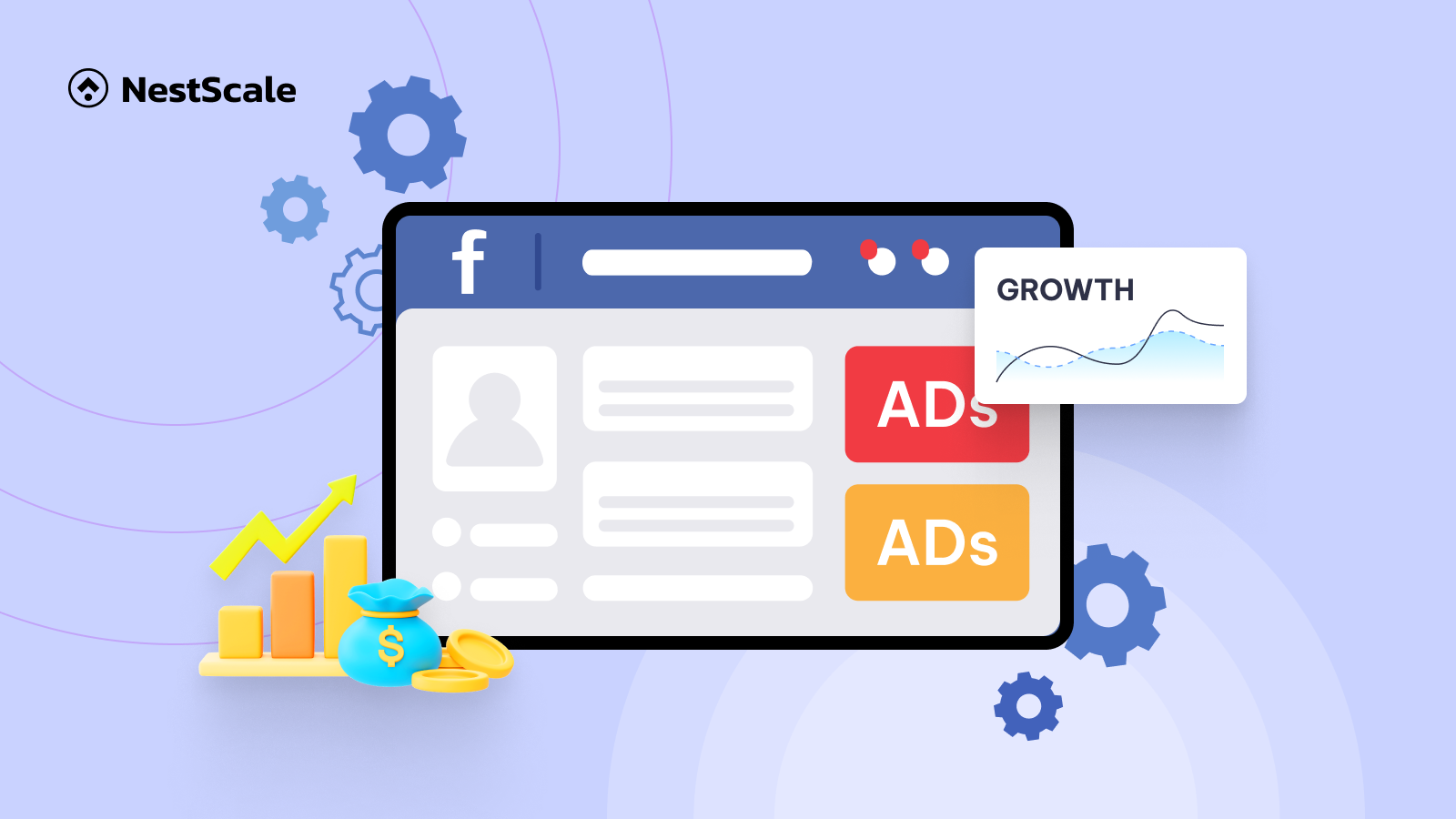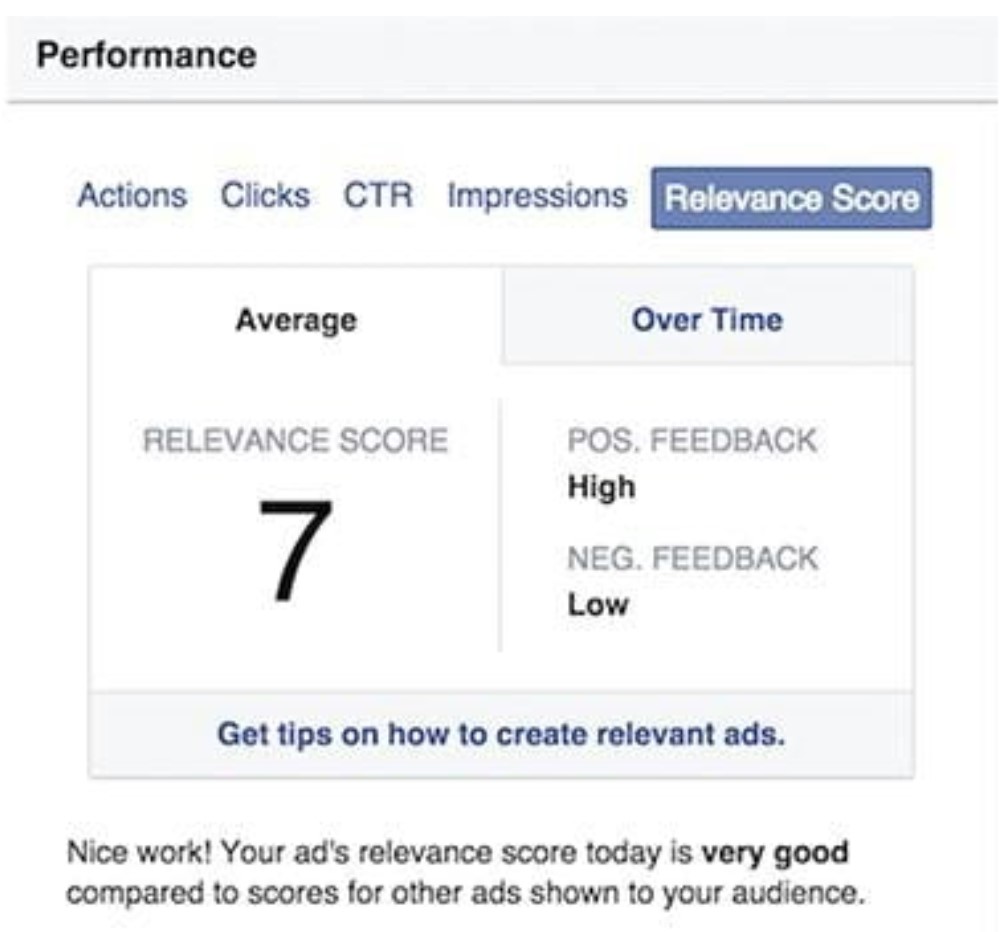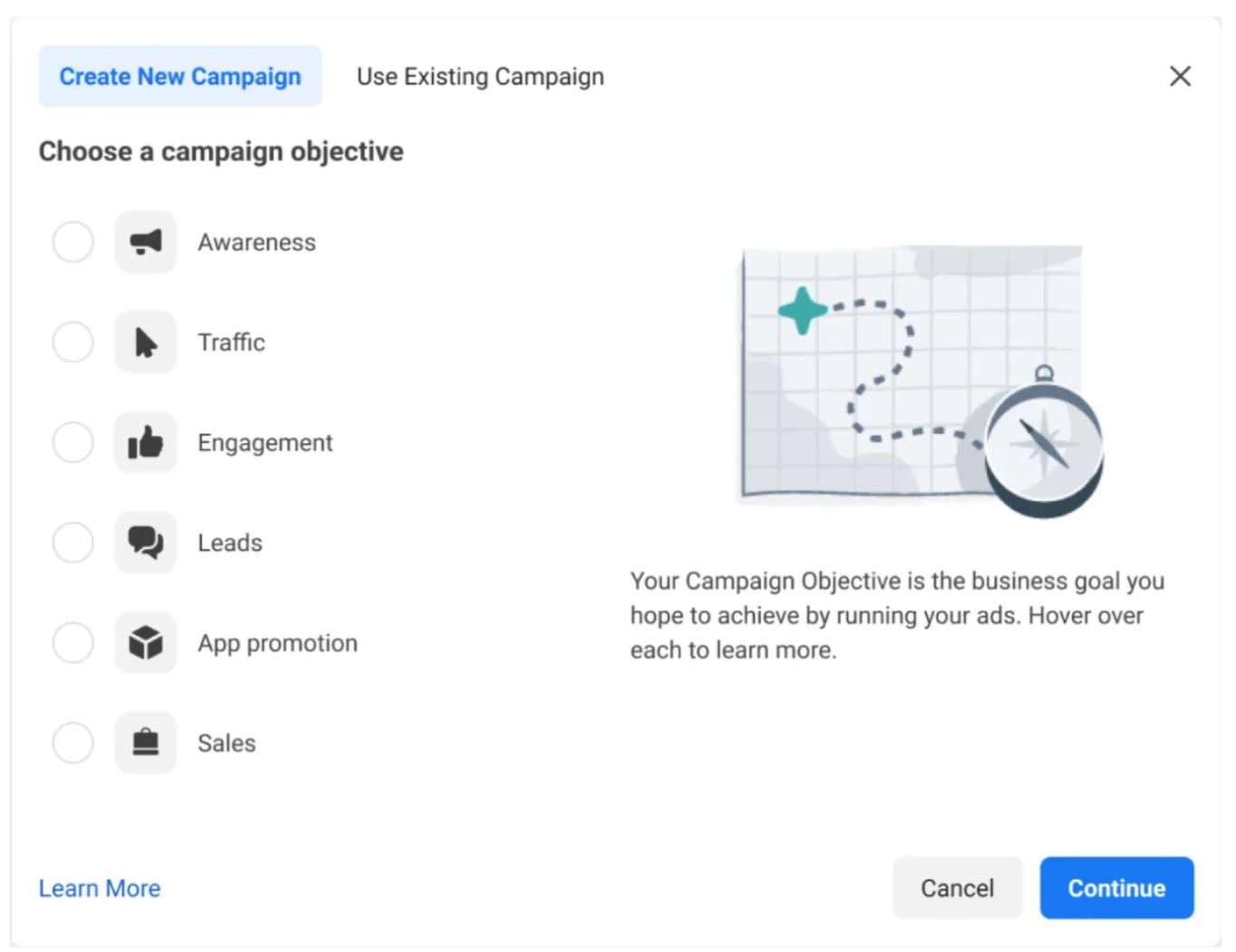You’ve poured hundreds of dollars into Facebook ad campaigns, yet your ROI remains disappointing, and your budget vanishes. If this sounds familiar, you’re not alone. Many online business owners face high costs and uncertain returns with Facebook Ads, often due to CPM (Cost per Mille). In this guide, we tackle CPM — a crucial metric in Facebook advertising. We’ll explain what CPM means, its impact on your ad costs, and how to reduce CPM effectively on Facebook ads.
Without further ado, let’s unravel some of the key concepts related to CPM!
Overview of CPM in Facebook Ads
First things first, before getting into details of how to lower your CPM, you should fully understand what CPM is, its formula, where to find it, and why it is so important.
How CPM is measured in Facebook Ads?
CPM (Cost per Mille) is a metric that tells you how much you’re paying for every 1,000 impressions of your ad. Impressions, in Facebook speak, are the number of times your ad pops up on users’ screens. But don’t be fooled – just because you have 3,000 impressions doesn’t mean 3,000 unique people have seen your ad. Users might see your ad multiple times, and each view counts as an impression.
The maths for Facebook CPM is fairly simple. Here is the formula:

Let’s put this into a real-world scenario. Imagine you’re an online merchant selling T-shirts. You are running a $150 Facebook ad campaign for those T-shirts and your ad gets 10,000 impressions. To find your CPM, you’d do this:
CPM = (150 / 10000) × 1000 = 15
So, your CPM would be $15.
In fact, you don’t even have to calculate this metric as Facebook has already given the number to you. Open your Ads Manager account and select the Columns: Performance and Clicks.
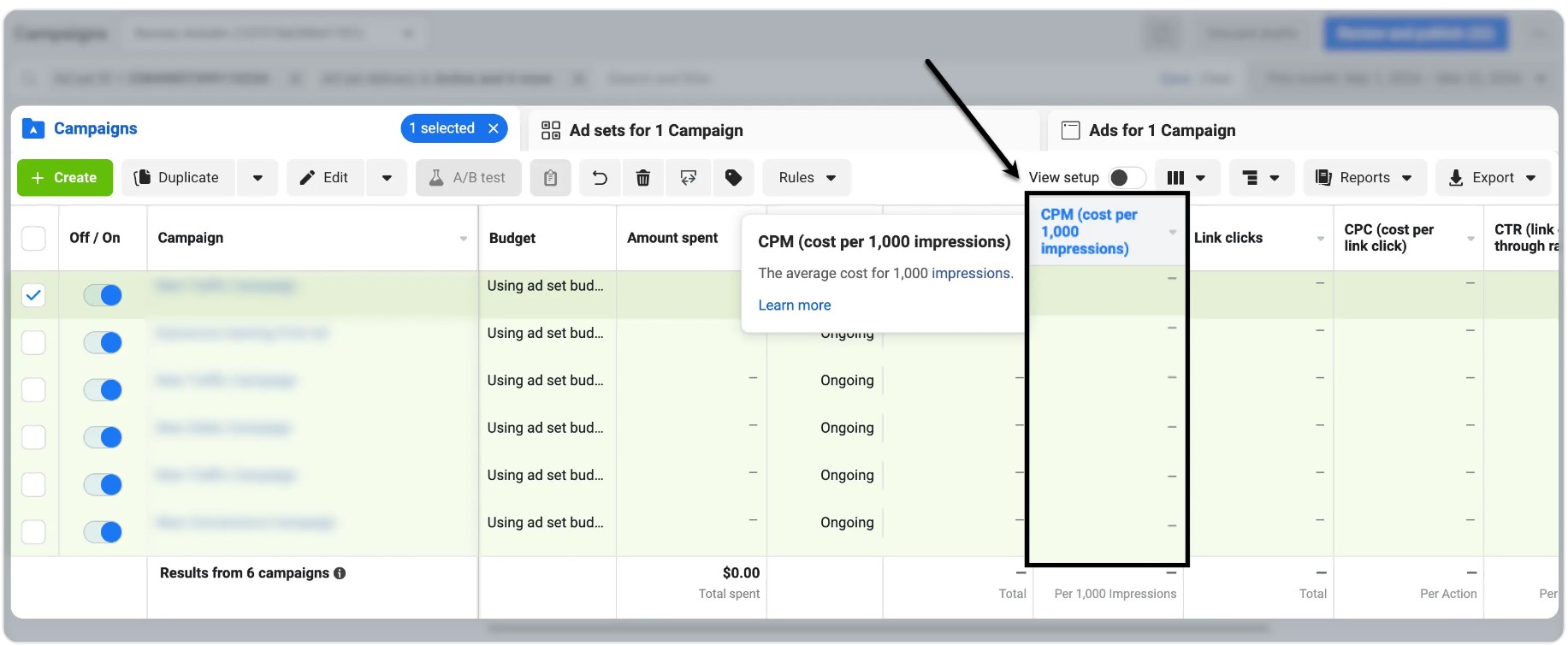
Voilà! You should now see the CPM for all your ad sets within the date range you’ve chosen.
Why CPM matters to merchants
Below are the three key reasons why E-commerce store owners should care about their CPM figures:
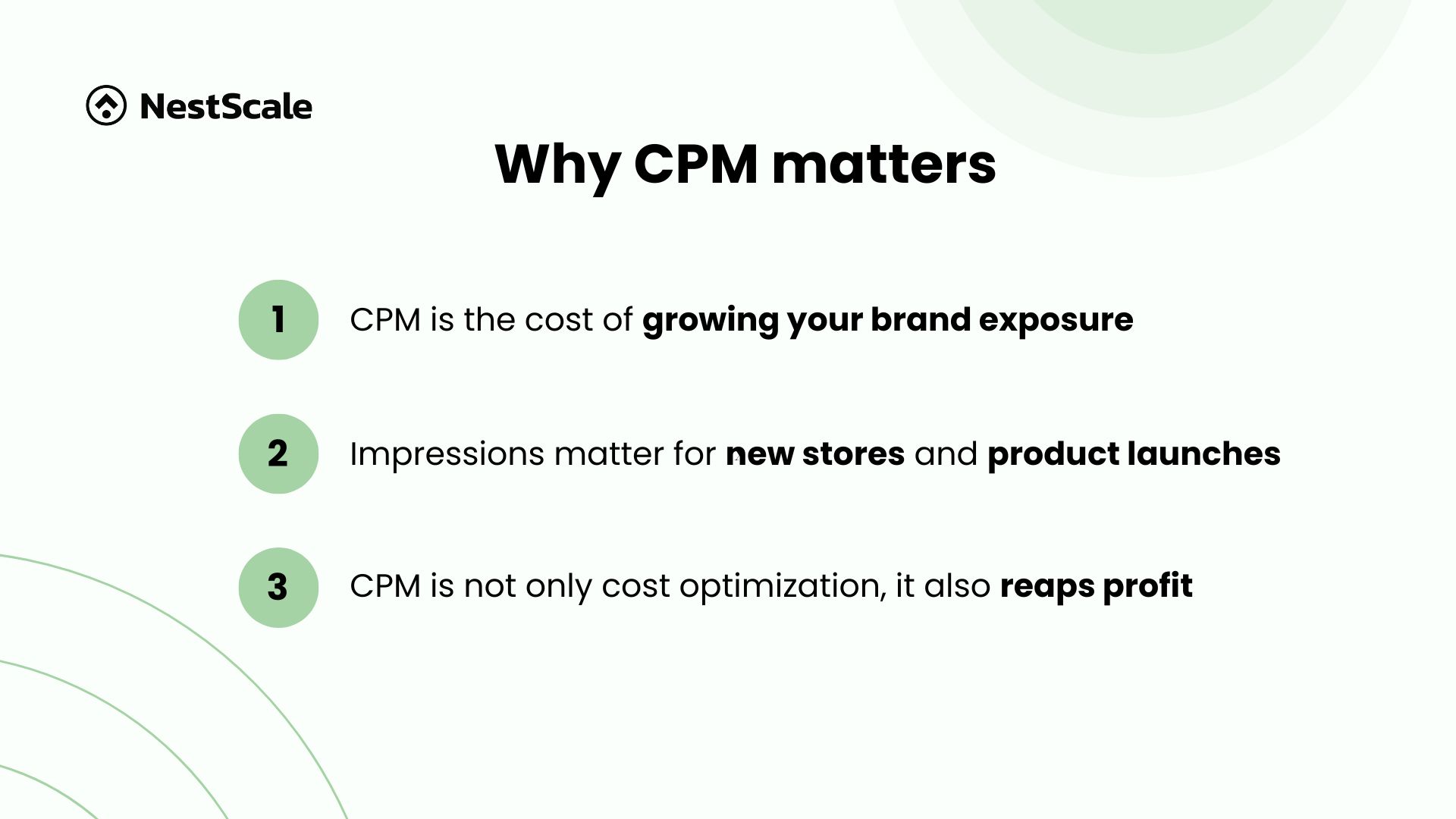
1. CPM is the cost of growing your brand exposure
Let’s be real – no one wants to burn cash on ineffective ads, especially if you’re a small to medium merchant trying to scale your business with limited funds. In essence, CPM dictates the expense of building brand awareness to potential customers.
2. Impressions matter for new stores and product launches
Now, CPM isn’t the be-all and end-all for every campaign. If your goal is to boost conversions, you might want to focus more on metrics like CPC or CPA. But for newly opened Shopify stores with low traction or those launching new product lines, tracking CPM is essential. Why? Because CPM helps you identify which creatives and channels are gaining the most impressions for your brand.
3. CPM is not only cost optimization, it also reaps profit
For instance, let’s say you have a constant CTR (Click-Through Rate) and a conversion rate of 4%, with an Average Order Value (AOV) margin of $100 and an ad spend of $1,000 per day. By decreasing your CPM by 50%, your daily profits could triple from $1,000 to $3,000. Numbers don’t lie.
What is a good CPM on Facebook Ads?
Knowing your CPM and adjusting it based on your store performance is necessary, but it’s not enough. “Know thy enemy’s CPM and know thyself’s CPM, and you will win a hundred ad campaigns.” You need to understand your market and your niche, too.
Typically, the average CPM hovers around $11. However, this number can fluctuate due to seasonal factors. For instance, the average Facebook CPM in July is about $9.73, but it can spike by up to $4 during the winter months due to fierce competition for ad space during the holiday season. Conversely, CPMs tend to dip in January and February, averaging around $9.
Keep in mind that these figures apply to the U.S., and trends can vary in other countries.
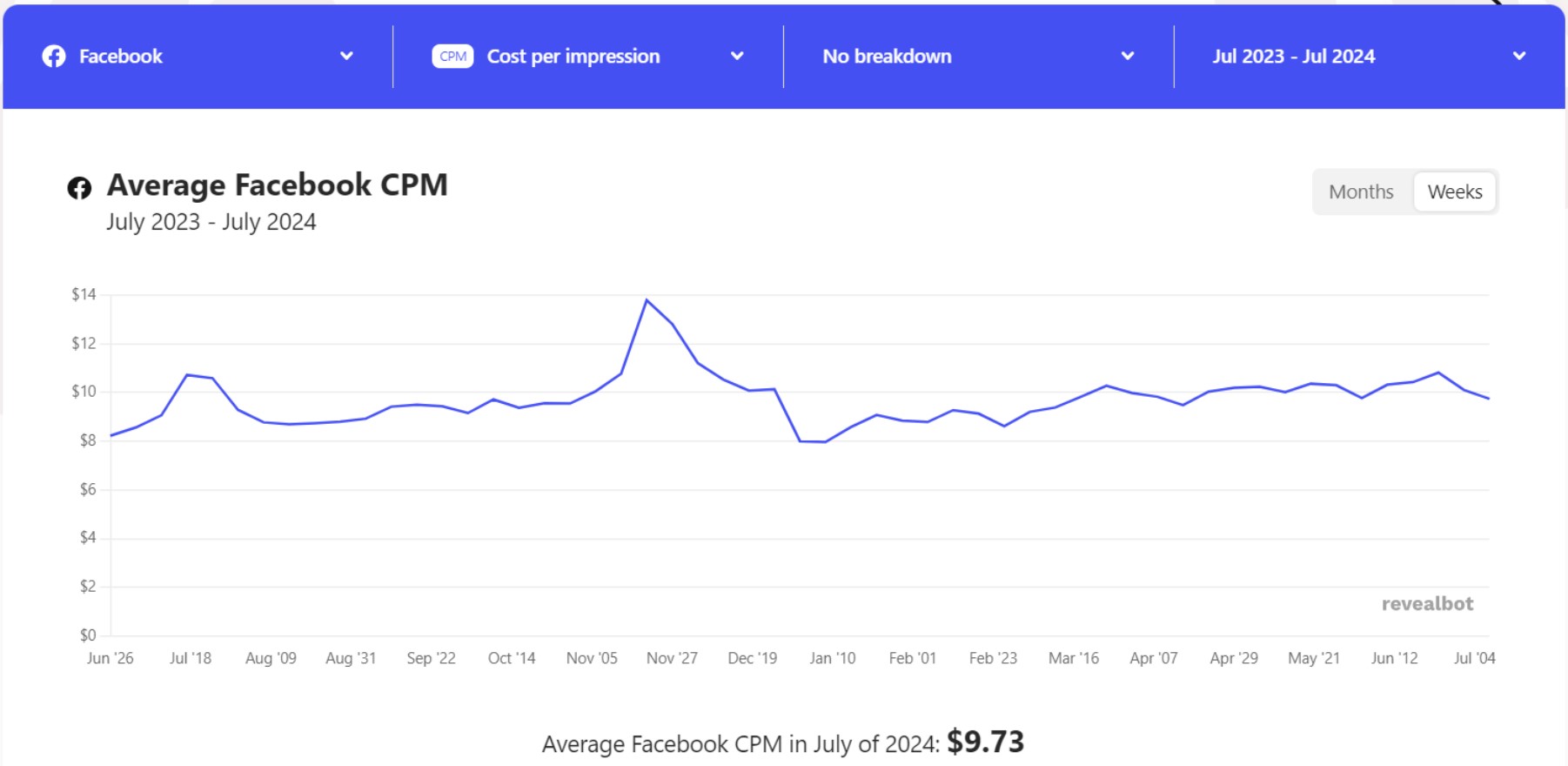
Why is your CPM so high on Facebook?
Now that we know what a good CPM looks like, let’s tackle the real issue: why your CPM might be higher than you’d like. Here are the top culprits driving up your costs and how to address them.
Some campaign objectives are more expensive
Sometimes high CPM boils down to the types of ad campaigns you’re running. Conversion campaigns will always be pricier than awareness or traffic campaigns. It’s common to see $30 CPM for conversion campaigns, while awareness campaigns hover around $3 CPM and traffic campaigns hit somewhere between $7 and $8.
Low relevance score
Your higher-than-wanted CPM might come from a low Facebook Relevance Score, found in the Facebook Ads Manager. Facebook ad delivery system prioritizes showing relevant content to the right audience, making a high relevance score (typically 7-10) a positive signal.
This score, ranging from 1 to 10, reflects expected audience interactions: higher scores result from anticipated positive engagements such as video views or conversions, while negative feedback lowers the score.
The difference between $20 and $40 CPM could be the quality of your ads creative. Look at your report for quality ranking, engagement rate ranking, and conversion rate ranking. If they’re below average, this can increase your CPM. Here, quality refers to the resolution and appeal of images/videos, the smoothness of ad copy, or any technical issues that might affect how well your ads perform.
Scope of the audience is too narrow
The more specific your audience, the more expensive it gets—especially true for hyper-targeted ad campaigns. For example, targeting an audience aged 24-34 will likely have a higher CPM than targeting a broader age range of 18-50.
Market competition
Facebook Ads bidding mechanism works on the good old’ supply-demand model. If your audience niche is being targeted by more and more advertisers, it drives up demand and thus, a higher CPM.
How to Reduce CPM on Facebook Ads?
High CPMs can be frustrating, but they’re not unbeatable. Ready to cut costs and boost your ad performance? Let’s look at some effective ways concerning how to reduce Facebook Ads CPM.
Retarget your Facebook ads more effectively
Retargeting is a powerful strategy to reduce your CPM on Facebook Ads by reaching users who have already shown interest in your products or services. To maximize the effectiveness of your retargeting efforts, it’s crucial to track user behavior beyond Facebook itself. This allows you to identify which ads and ad sets yield the best results.
While Facebook Pixel is a useful tool, it has limitations when it comes to providing a comprehensive view of your ad performance across different platforms and touchpoints. To bridge this gap, consider using the NestAds app. NestAds goes beyond the capabilities of Facebook Pixel by centralizing data from multiple platforms like TikTok, Google, and, of course, Facebook. This gives you a more detailed and holistic view of your customers’ journeys, enabling you to refine your retargeting strategies effectively.
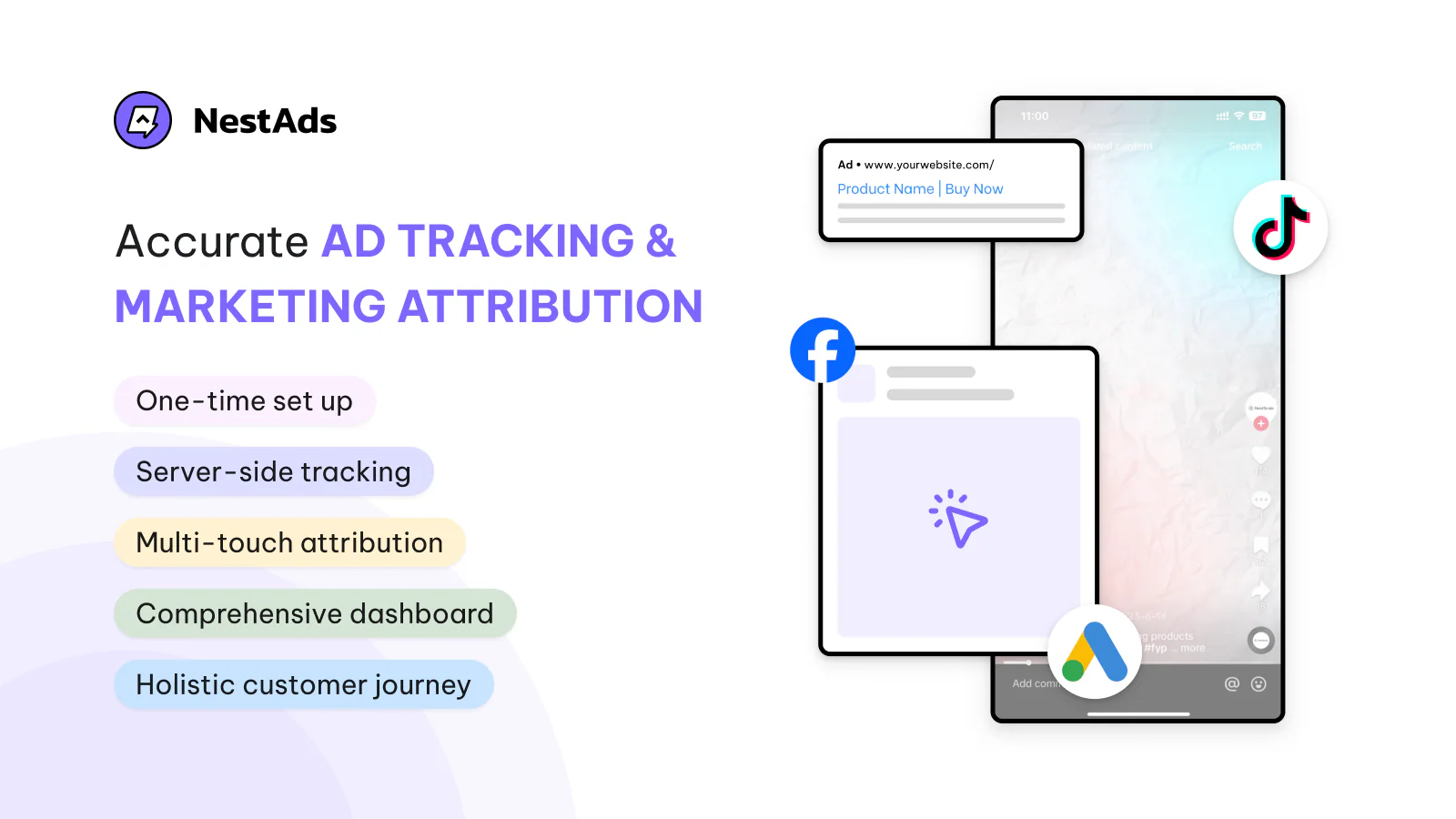
Choose campaign objectives aligned with your business goals
Facebook’s auction system will then prioritize showing your ads to people within your target audience who are most likely to take actions related to that objective.
For instance, if your goal is to increase traffic to your online mug store, selecting an ad objective focused on Engagement and Sales could potentially increase your CPM costs beyond optimal levels.
Make your creatives more relevant and attractive
To enhance Ad Relevance Score, it’s crucial to test various creative elements before launching a campaign. Merchants should experiment with different combinations of images and copy across diverse audience segments via Facebook Dynamic Creative Optimization (DCO). This testing allows them to pinpoint which combinations achieve the highest relevance scores, indicating better engagement and lower delivery costs.
Additionally, consider these practical tips to make ad creatives more compelling:
- Highlight product features and benefits: Showcase products and how they can solve customers’ problems.
- Use high-quality visuals: Images and videos should be clear, attractive, and aligned with the brand’s aesthetic.
- Include social proof: Incorporate customer testimonials or reviews to build trust and credibility.
- Create a sense of urgency: Use phrases like “limited time offer” or “while supplies last” to encourage immediate action.
- Craft an engaging CTA: Ensure the CTA is clear, concise, and prompts the desired action (e.g., Shop Now, Learn More, Sign Up).
Limit ad frequency to lower CPM
While merchants should carry out retargeting campaigns, be mindful that a higher frequency can harm your campaign metrics. When the same people repeatedly see an ad, their engagement tends to drop. This decline lowers click-through rates (CTR) and increases both cost-per-click (CPC) and cost-per-thousand impressions (CPM).
Facebook doesn’t specify an ideal ad frequency, but generally, it’s advisable to keep it below seven. You can set up automated rules so that when a specific frequency is reached, Facebook will either turn off the ad or lower the budget for you. You’ll find the “Automated Rules” option in the main Business Manager interface.
Discover the timing that works best for your ads
Seasonality matters. During peak periods like winter months or Super Bowls, you might want to start your ad campaign a little earlier than your competitors to ensure bid costs don’t go through the roof.
Imagine you’re planning an ad campaign for winter apparel. Knowing that demand spikes as temperatures drop, it’s wise to launch your campaign a few weeks before the first snowfall. This early start ensures you secure reasonable bid costs before competition intensifies closer to peak winter shopping periods.
On a more micro level, ad timing can be anchored on user activity patterns throughout the week. Consider a scenario where you’re promoting a productivity tool aimed at busy professionals. Weekdays become critical for reaching them during commutes or lunch breaks when they are more likely to engage with business-related content. Conversely, weekends offer a chance to connect with users in a more relaxed state, potentially receptive to lifestyle and leisure-oriented ads.
Broaden your target audience
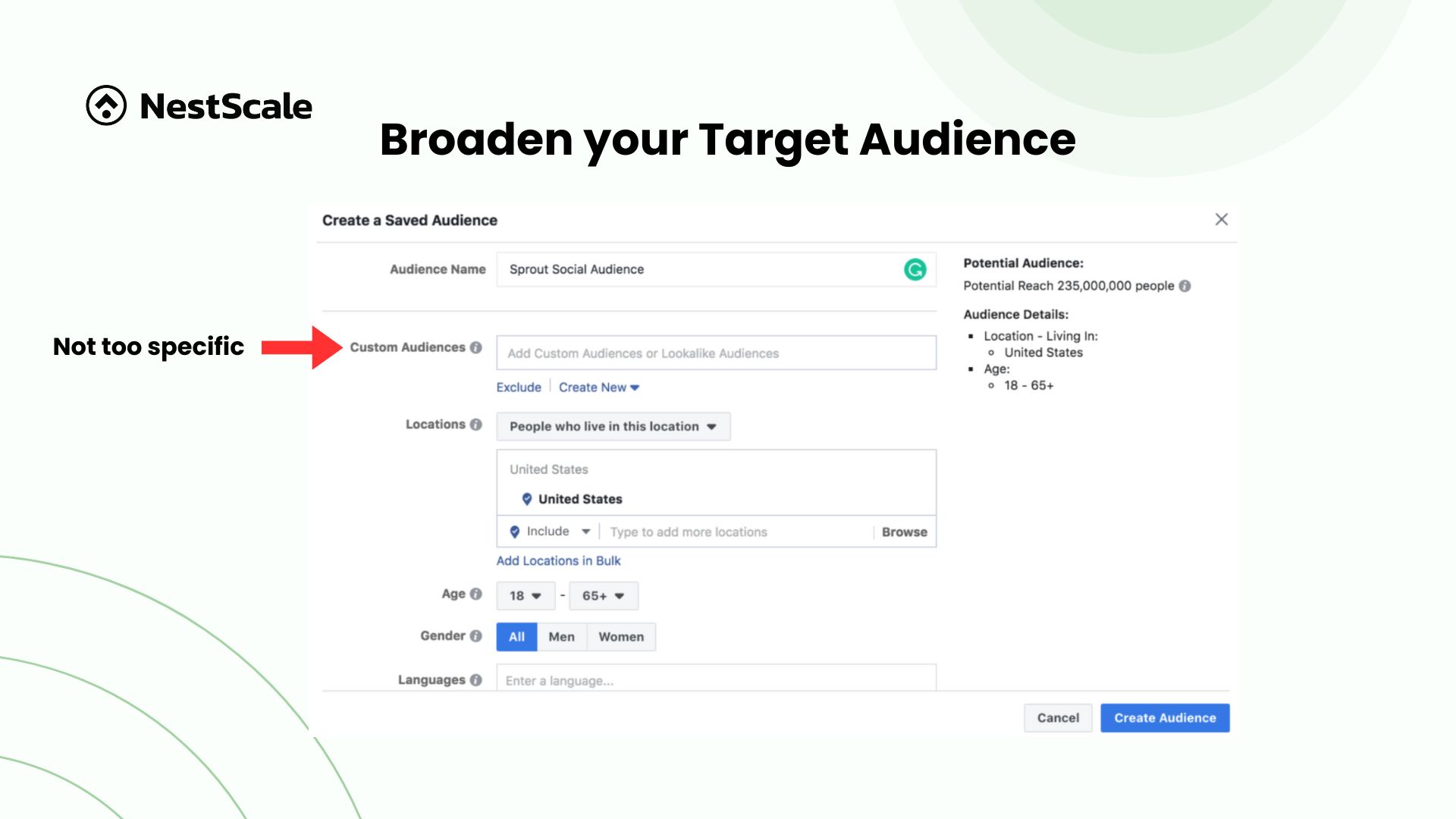
If your goal is to maximize ad impressions, sometimes it’s beneficial to widen your target audience. With Facebook ads, striking a balance is crucial—not too broad and not overly specific.
- Selecting the right audience: Use location and demographic targeting, expand your audience for better results, and avoid overly specific lookalike or interest-based dimensions
- Excluding some audiences: Exclude recent purchasers by setting rules for the last 10 days, but include some past website visitors to keep your ads relevant.
- Ensuring relevant content: Ensure content resonates with new customers, test it before broad use, and use static tags only when they fit every item in a product group, avoiding them for large groups.
Wrap up
Optimizing CPM in Facebook Ads is essential for efficient ad spend. By understanding how CPM is measured and why it matters, you can better assess your ad performance. A good CPM varies, but benchmarking against industry standards is key.
High CPMs can result from unsuitable campaign objectives, low relevance scores, poor ad quality, narrow audiences, or high competition. To reduce CPM, focus on effective retargeting, aligning ad objectives with business goals, improving relevance scores, enhancing creative content, managing ad frequency, timing ads strategically, and broadening your audience.




































